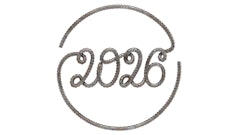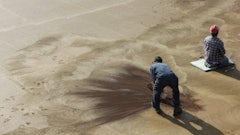In many buildings the floor is literally the only physical contact the customer experiences with the structure, whether you’re talking about a resort property, retail store, grocery store or one of the many other buildings visitors and customers pass through each day. According to the Consumer Product Safety Commission (CPSC), floors and flooring materials contribute directly to more than 2 million fall injuries each year. And the National Floor Safety institute’s website reports 55 percent of slips, trips and falls are attributed to “Walking Surfaces.”
Visitors and customers aren’t alone when it comes to the risk of slip and fall issues. Falls on the same level are the second leading cause of workplace injuries; the National Safety Council (NSC) estimates costs surrounding employee slip and falls come in around $70 billion annually. This makes floor surfaces one of the leading safety issues in the working environment.
Some facilities experience slip and fall incidents weekly and monthly, usually resulting in some type of claim against the property or employer. Of course a variety of floor coverings are found in these facilities, from carpet to VCT. Polished concrete floors are a growing trend in many of these building types. When maintenance crews fail to properly clean polished concrete floors, either through foregoing regular maintenance or using the wrong cleaning chemicals, debris or chemical buildup can increase the probability of a slip and fall. COF (coefficient of friction) testing is one way you as a contractor can be proactive about floor safety and potentially avoid legal issues.
Testing options
Some contractors already own testing equipment and test the polished floors on their jobsites. This is actually a positive approach to assist them in adding value to their services and keeps them a step ahead of their competition.
There are several testing devices available on the market. Slip testing instruments are continuing to create havoc and confusion for end users. Which device to use may be summed up by all ASTM test methods. These methods require a statement of the testing apparatus' precision and bias. The precision of a method concerns its reliability and reproducibility. Reliability is the ability of a given instrument/operator to obtain consistent results. Reproducibility is the ability of different operators/laboratories to obtain similar results.
The two standards that most affect COF testing are the ANSI B101.1 and the ANSI B101.3. The ANSI B101.3 specifically references the use of an approved or recognized tribometer; the equipment I use, the BOT 3000 from Regan Scientific Instruments, is a National Floor Safety Institute (NFSI) approved tribometer.
SCOF, or static coefficient of friction, measures the wet COF as per the ANSI B101.1 DCOF, or dynamic coefficient of friction, measures the wet dynamic. All tests are done by adding liquid (distilled water or a new surfactant additive) to the floor surface. Most slip and falls on floor surfaces are due to some type of liquid spill or moisture on the surface, this is why testing is done by adding liquid to the testing surface. Testing auditors use 0.50 as a starting point what is normally accepted as a safe floor.
A concrete contractor recently asked me to review COF and gloss testing by an engineering testing consultant company. Engineering companies test everything related to facility construction, both interior and exterior. Unfortunately they only test to construction specifications determined by the building owner. Sometimes spec-only testing leaves a lot to be desired.
This particular tester was using a device that required intensive training to prevent operator error, and was testing gloss readings under overhangs and shelving racks. The flooring contractor's concerns over the results led to additional time and labor not budgeted to correct issues that more accurate testing would have prevented. Understanding the value of an experienced, knowledgeable and trained walkway auditor is just as important as understanding the value of the tests results.
Contractors and facility owners need to be aware of current testing methods. Owning an appropriate testing device, or hiring a certified tester, will allow you to set baselines for COF measurements and test periodically throughout the life of the floor to ensure hard surface floor safety for both employees and customers using polished concrete.
Jeff Dykstra is a Certified NU-SAFE Walkway Auditor with The Dykstra Group, an independent, third-party COF tester, and a manufacturer’s representative for concrete equipment and diamonds. He is a former concrete polisher and troubleshooter. Reach him at [email protected].



















